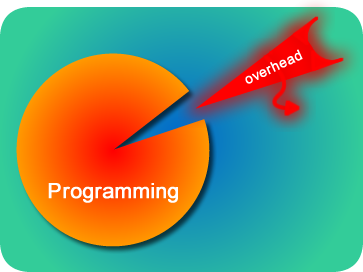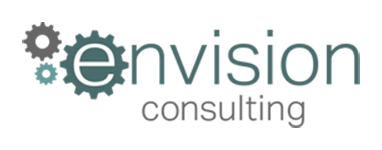 So, it finally happened. Just a few short months after this book , and light-years behind this organization, the head honchos at Guidestar, Charity Navigator and BBB Wise Giving Alliance finally wake up and tell us what we already knew: Lack of overhead expenses are not only NOT entirely indicative of a charity's worthiness, they can also (shock!) be a hindrance. Who knew?
So, it finally happened. Just a few short months after this book , and light-years behind this organization, the head honchos at Guidestar, Charity Navigator and BBB Wise Giving Alliance finally wake up and tell us what we already knew: Lack of overhead expenses are not only NOT entirely indicative of a charity's worthiness, they can also (shock!) be a hindrance. Who knew?
We did. You do. In fact anyone who has spent any meaningful time at a small or mid-size nonprofit for even a second knows cuts to overhead hurt. Yet this hasn't stopped donors from blindly trusting those pie-charts and siphoning millions of dollars away from overhead and into programming. And while we absolutely cannot dispute the importance of mission-driven programming, a weak infrastructure can hinder your mission in terms of efficacy, efficiency and scalability. Here's How:
Efficacy: Lets face it, being effective is more than just churning out client numbers. Everyone from grantors to twitter is now joining in the chorus: Impact Matters! Outcomes matter! But it's incredibly hard (if not impossible) to invest time on improving our methods, gathering data or strategically planning if you are always simply struggling to meet basic needs. Effective practices simply aren't honed in non-profits because we don't have the time and resources to test, strategize and implement. Instead, we pull together our limited resources, slap on a smile and make it happen because we HAVE to, but we don't necessarily have any impetus either internally or externally to do it BETTER and that's a problem.
Efficiency: Doing more on less requires more than elbow grease and good intentions, it takes tools. In With Charity For All, Ken Stern jokes that if charities ran Silicon Valley, we'd still be using typewriters, and he's not far off. Nonprofits are far from being early adopters, they are behind the times - especially when we consider the incredible technological advances available to us. Not only does this continue our reliance on already burdened staff and volunteers, it can also significantly hinder our operations when it comes to how we manage data collection. Lack of meaningful data integration means information is stodgy, double entered, or just plain lost. But strong infrastructure takes time and investment, it takes training, development and money. Until we get those things we can keep running, but not as efficiently as possible.
Scalability: Scaling up your operations and programming will take more than just cash. Being scalable means that you have to have the infrastructure and talent ALREADY on board to help guide the growth process. But the three C's associated with talent (Coaching, Cultivation, and Compensation) require substantial forethought, planning and investment - none of which is possible without overhead spending. So while you're trying to whittle down that overhead gap to fit within grant proposals and government contracts, growth becomes secondary, lost in the shuffle, or implausible. This means we can never have serious conversations about expansion and growth, because we lack the personnel with the experience and foresight to accomplish it.
